
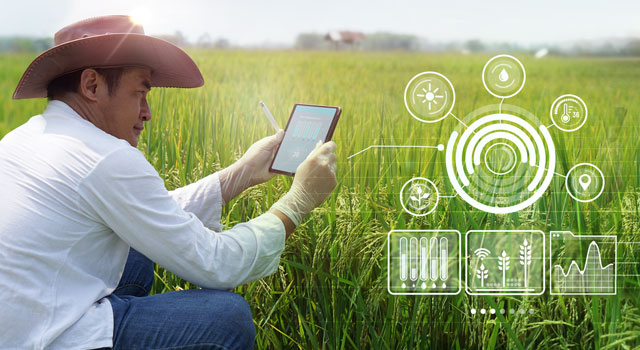
SIGNALS+ NEWSLETTER SUBSCRIPTION
Stay updated and leverage Signals+ latest insights, information and ideas on Connectivity, Digital Health, Electrification, and Smart Industry.
Thank you for subscribing to ADI Signals+. A confirmation email has been sent to your inbox.
You'll soon receive timely updates on all the breakthrough technologies impacting human lives across the globe. Enjoy!
CloseINCREASING AGRICULTURAL PRODUCTIVITY VIA THE INTELLIGENT EDGE
If you have ever planted fruits and vegetables in your home garden, you know how fickle plants can be as the weather changes through the growing season. In a good year, you will feel the satisfaction of accomplishment and proudly share your veggies with friends and family. If it is particularly hot, dry, or rainy, you will harvest a paltry yield that may not even be enough for a single meal. Not good, but there is always next year.
In lower-income economies, however, the success of a family garden has more significance, including the real threat of persistent hunger or worse. Larger commercial farmers are also at the mercy of increasingly unpredictable weather patterns driven by climate change, but in economically underdeveloped countries where agriculture is one of the primary drivers of GDP, the success or failure of those farms goes beyond economic concerns. National stability could be at risk.
Up to 80% of rural households in some developing countries depend on agriculture for their livelihoods. Populations in these regions are also most at risk of climate change–induced hunger and food insecurity. Women and children are particularly vulnerable. Food insecurity is a global problem. 822 million people remain undernourished, 149 million of them are children—stunted because of undernutrition.1
Together, climate change and food insecurity pose an existential challenge. According to the International Monetary Fund (IMF), “It’s in the world’s interest to ensure climate change does not jeopardize development and stability in poorer countries. Investing in climate resilience… can be less expensive than humanitarian relief and reconstruction after a disaster.”
UNEQUAL COST OF CLIMATE CHANGE
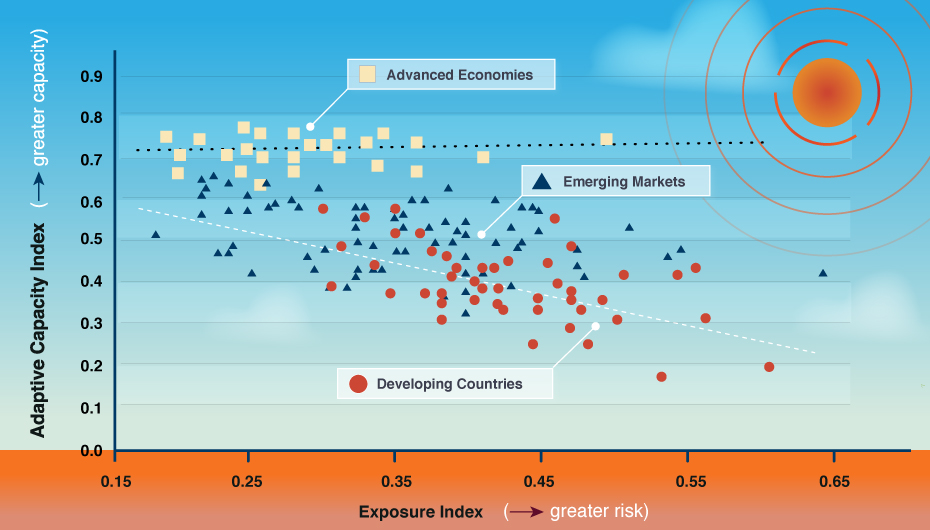
Source: IMF2
Higher temperatures, water scarcity, droughts, floods, and greater CO2 concentrations in the atmosphere can affect staple crops. Food production is likely to fall in response. A multiyear study by the International Food Policy Research Center predicted that Guatemala and Costa Rica will each lose 17% of their rainfed corn yields by 2050 due to climate change. Honduras will lose 12% of its yield, with Colombia, Peru, El Salvador, and Nicaragua each losing roughly 8%.3
FARMING ON THE EDGE
Very little can be done to protect plants from increasing occurrences of hurricanes or rising sea levels caused by climate change. However, the emergence and proliferation of Intelligent Edge technologies are enabling large farms and smaller gardens to better manage and improve their crop yields in the face of longer-term weather changes. The Intelligent Edge solutions place computing power in smart devices at the point of use on the edge of traditional computing networks.
Traditional networks rely on a hub-and-spoke model, sending data from distant locations to centralized data centers for analysis and decision-making. Processing power comes at the expense of immediacy and transport risk. Moving processing power nearer to data sources offers greater responsiveness and efficiency, especially in rural farming communities in developing countries.
Today, Analog Devices’ engineers are working with small-scale commercial farmers in the Philippines to create closed-loop Intelligent Edge solutions to monitor and respond to the real-time irrigation and fertilizer needs of their coffee crops. Potential benefits include more efficient use of farmers’ limited resources, greatly improved coffee crop yields, and at the national level, potentially returning the Philippines to its place as one of the world’s top coffee exporters.
COFFEE IN THE PHILIPPINES
Coffee production in the Philippines has decreased from 68,800 metric tons in 2016 to 60,600 metric tons in 2020, a 12% drop of 8,200 metric tons in just four years.4 Driving forces behind falling coffee production include climate change-driven weather pattern changes and a lack of agricultural technology to combat the uncertainties of those changes.
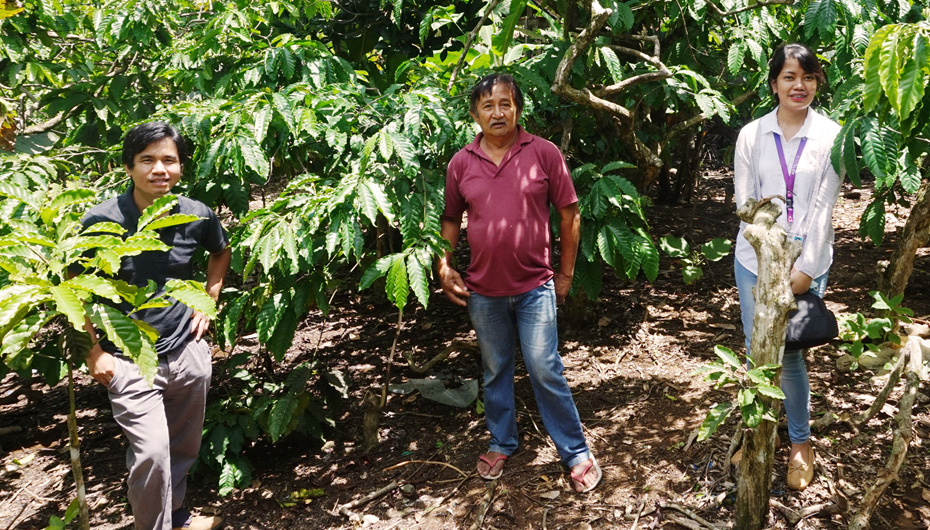
In 2017 the Philippine government announced a 5-year coffee roadmap5 to revitalize the sector. That plan led to a partnership between Analog Devices and the Amadeo Cooperative Coffee Farm in Minantok East, Amadeo, Cavite. Together the two have created a zero-error, closed-loop system that senses and analyzes hydration and fertilization levels in the soil and the plant leaf. The system enables water and nutrients to be supplied at the right times and at optimal levels to maximize crop yield. “Efforts to reverse falling coffee-production levels in the Philippines made it a perfect location for ADI’s Intelligent Edge technologies. We are ecstatic about the initial impact we see and the future potential,” said Manny Malaki, Senior Director of COS and Project Sponsor, ADI Environmental Team.
GROWING COFFEE WITH TECHNOLOGY
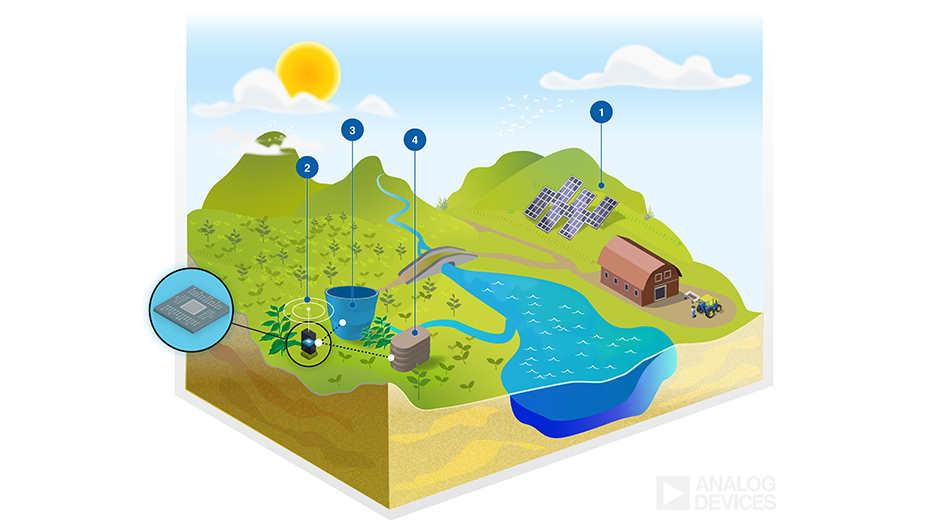
Edge farming technologies that can sense and act instantly on local weather and microclimate changes are enabling farmers to control what can be controlled and ensure their crops are properly watered and fertilized, regardless of weather patterns.
The solar-powered Analog Devices system uses the Philippines’ plentiful sunshine to collect and analyze information on soil status and coffee plant health, wirelessly transmitting data and instructions to water and fertilizing systems in real time. Leveraging the Artificial Intelligence (AI) engine in the ADI MAX78000 AI microcontroller, the system continues to learn over time and improve its ability to balance water, macronutrients, and pH in response to the smallest of environmental influences. Three days of intense, humid heat followed by two days of heavy rain are not unusual in the Philippines, and the ADI solution is able to sense all variables at desired intervals, ensuring crop needs remain optimally addressed for plant health and growth.
FUTURE-PROOFING AGAINST CLIMATE CHANGE IS POSSIBLE TODAY
The teams at Analog Devices and the Amadeo Cooperative Coffee Farm started with just one small plant in the basement of an ADI engineer. A full mock-up of the system was tested in a single flowerpot under a grow light and yielded promising results. Alternating drought and heavy rain conditions, data was collected in real time while water and fertilizer adjustments were made. “We could see right away the Edge solution could be game-changing for the cooperative. After our engineering team analyzed the results, we were excited to share the information with the cooperative and move forward with additional trials,” said Romulo Maggay, Principal Engineer and Project Lead, Analog Devices.
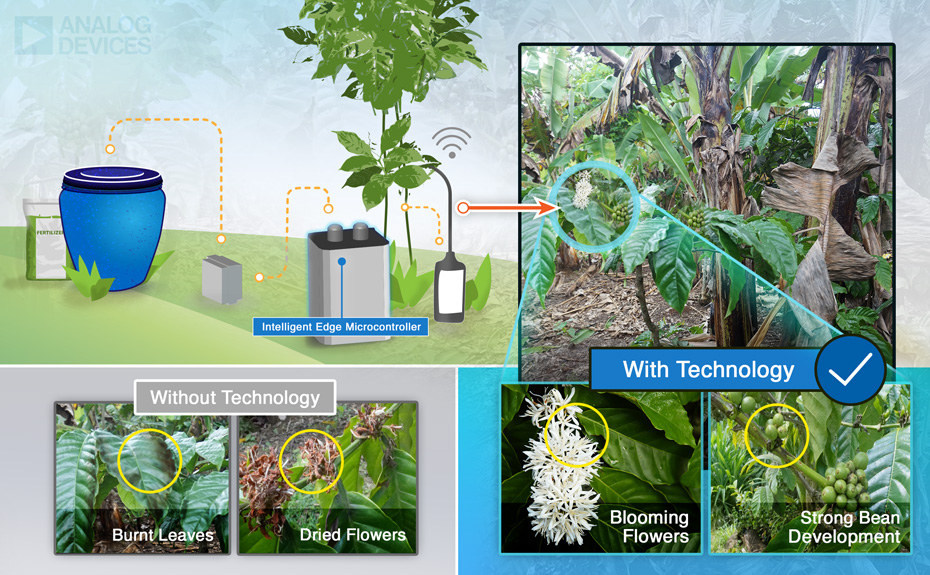
The next step was to rerun the tests on the farm with one plant and soon after expand to ten plants. The Amadeo Cooperative Coffee Farm generated some startling insights in the seven-month trial using those ten plants. These results are precisely what our coffee farmers need right now,” said Randy Mendoza, farm site owner, Amadeo Farmers Association.
Amadeo Cooperative Coffee Farm Trial Results
Coffee harvest yield/tree from control farm vs. smart coffee
Phase two of Intelligent Edge system testing is now underway at three larger farms in three different areas of the country, each with its unique microclimate. All use larger-scale systems and analyze resilience against changing tropical weather patterns. More broadly, the cooperative is now developing long-term plans to reclaim unused land and expand production.
Luzviminda Amparo, Amadeo Department of Agricultural Head, stated “Maximizing our crop yield with new technology is a very good example of responding to climate change with intelligence and foresight. I’m looking forward to expanding the collaboration on various crops that are important to our economy and our local food sources.”
Starting with a single plant, ADI engineers and farmers at the Amadeo Cooperative have shown the promise of Edge technology. “Being able to reliably harvest more beans gives us hope we can again be a top coffee producer,” said Rolando Angcao, Chairman, Amadeo Coffee Farmers.
Partnering at the government level is possible in the Philippines and other nations as well, which can provide the extra economic support farmers need to access these productivity and efficiency-enhancing Edge systems. In addition, as these systems reduce crop risk, private banks will likely be more comfortable offering farmers loans at better rates to cover seed and fertilizer costs at the start of each growing season. The potential benefit to the Philippines’ profitability is clear.
AN EFFECTIVE WAY FORWARD
As climate change advances, it’s critical that we develop technology that dampens its effect. The Intelligent Edge opens the door and holds the promise of helping to maximize crop yield in the face of increasingly unpredictable weather patterns.
WORLD HUNGER IS ON THE RISE, AFFECTING NEARLY 10% OF PEOPLE GLOBALLY.
World Vision, Canada
By implementing closed-loop Intelligent Edge solutions, it is now more viable to expand beyond coffee to rice and beans—the staple for many underdeveloped countries. Offering access to this new technology could significantly improve crop yields, drive down costs, and have a positive impact on food insecurity in the Third World and across the globe. While the overwhelming majority of the world’s hungry people live in the developing world, hunger exists in more advanced countries as well, including the United States, where 30 million children suffer from undernutrition.
THE INTELLIGENT EDGE FIGHTING CLIMATE CHANGE AND HUNGER
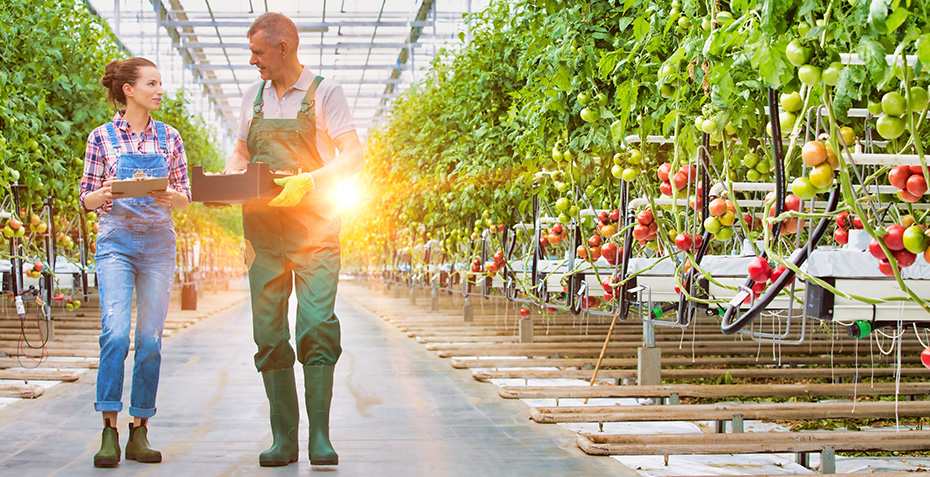
Agricultural practices will continue to evolve as the world becomes more populated and urbanized. There is an opportunity to scale ADI’s AI-powered Edge system to suit the needs of everything from massive commercial farms to individual greenhouses and home gardens. Beyond coffee, virtually all food-producing plants can benefit from self-learning fertigation systems.
Technological advances have long played a role in making farms more efficient—from machinery that plants and harvests, to massive irrigation and watering systems. Today, the Intelligent Edge technology that is revolutionizing how we adapt and control our homes, holds the same promise for farms and their day-to-day operations. With smart, closed-loop fertigation systems, farmers can mitigate some of the impacts of climate change, spending less time tending to and worrying about their crops and more time planning for a prosperous future in which they can play a larger role in meeting the demand for food globally.
“It’s encouraging to think about a future where intelligent, learning technological systems can be designed to help address some of the agricultural impacts of climate change and expand food access around the world,” said ADI’s Manny Malaki.
References
1 FAO, IFAD, UNICEF, WFP, and WHO. “The State of Food Security and Nutrition in the World 2019. Safeguarding against Economic Slowdowns and Downturns.” FAO, 2019.
2 Kristalina Georgieva, Vitor Gaspar, and Ceyla Pazarbasioglu. “Poor and Vulnerable Countries Need Support to Adapt to Climate Change.” International Monetary Fund (IMF) Blog, March 2022.
3 Timothy S. Thomas, Ana Maria Loboguerrero, Ana R. Rios, Deissy Martinez, Baron, Graciela Magrin, and Vincente Barros. “How Climate Change Will Impact Agricultural Productivity in Central America and the Andean Region.” International Food Policy Research Institute Blog, August 2019.
4 Yvette Tan. “Revised Philippine Coffee Roadmap Hopes to Revitalize Local Coffee Industry.” Manila Bulletin, October 2021.
5 “2017-2022 Philippine Coffee Industry Roadmap.” Department of Agriculture.



